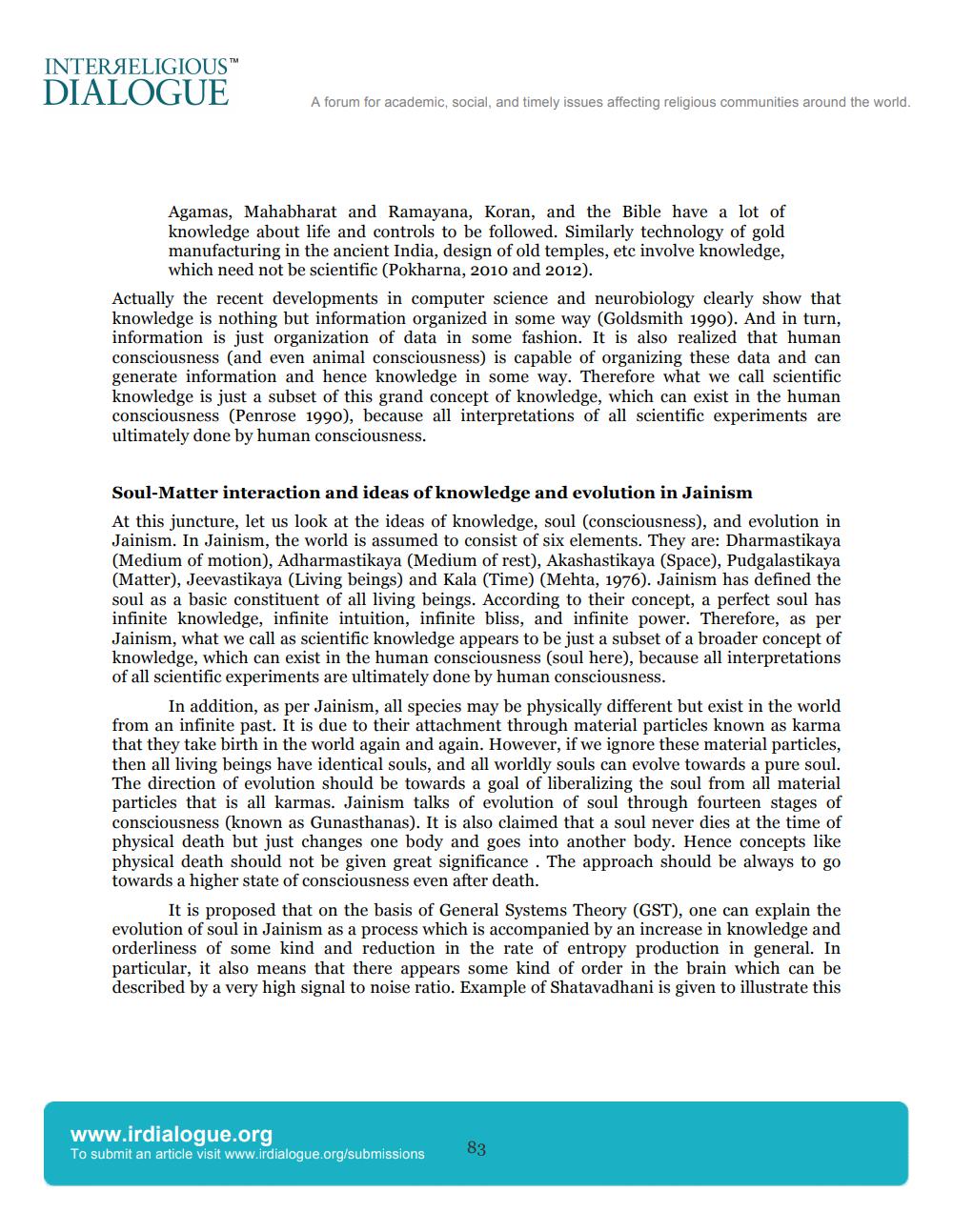________________
INTERJELIGIOUS DIALOGUE
A forum for academic, social, and timely issues affecting religious communities around the world.
Agamas, Mahabharat and Ramayana, Koran, and the Bible have a lot of knowledge about life and controls to be followed. Similarly technology of gold manufacturing in the ancient India, design of old temples, etc involve knowledge,
which need not be scientific (Pokharna, 2010 and 2012). Actually the recent developments in computer science and neurobiology clearly show that knowledge is nothing but information organized in some way (Goldsmith 1990). And in turn, information is just organization of data in some fashion. It is also realized that human consciousness (and even animal consciousness) is capable of organizing these data and can generate information and hence knowledge in some way. Therefore what we call scientific knowledge is just a subset of this grand concept of knowledge, which can exist in the human consciousness (Penrose 1990), because all interpretations of all scientific experiments are ultimately done by human consciousness.
Soul-Matter interaction and ideas of knowledge and evolution in Jainism At this juncture, let us look at the ideas of knowledge, soul (consciousness), and evolution in Jainism. In Jainism, the world is assumed to consist of six elements. They are: Dharmastikaya (Medium of motion), Adharmastikaya (Medium of rest), Akashastikaya (Space), Pudgalastikaya (Matter), Jeevastikaya (Living beings) and Kala (Time) (Mehta, 1976). Jainism has defined the soul as a basic constituent of all living beings. According to their concept, a perfect soul has infinite knowledge, infinite intuition, infinite bliss, and infinite power. Therefore, as per Jainism, what we call as scientific knowledge appears to be just a subset of a broader concept of knowledge, which can exist in the human consciousness (soul here), because all interpretations of all scientific experiments are ultimately done by human consciousness.
In addition, as per Jainism, all species may be physically different but exist in the world from an infinite past. It is due to their attachment through material particles known as karma that they take birth in the world again and again. However, if we ignore these material particles, then all living beings have identical souls, and all worldly souls can evolve towards a pure soul. The direction of evolution should be towards a goal of liberalizing the soul from all material particles that is all karmas. Jainism talks of evolution of soul through fourteen stages of consciousness (known as Gunasthanas). It is also claimed that a soul never dies at the time of physical death but just changes one body and goes into another body. Hence concepts like physical death should not be given great significance. The approach should be always to go towards a higher state of consciousness even after death.
It is proposed that on the basis of General Systems Theory (GST), one can explain the evolution of soul in Jainism as a process which is accompanied by an increase in knowledge and orderliness of some kind and reduction in the rate of entropy production in general. In particular, it also means that there appears some kind of order in the brain which can be described by a very high signal to noise ratio. Example of Shatavadhani is given to illustrate this
www.irdialogue.org To submit an article visit www.irdialogue.org/submissions
03




